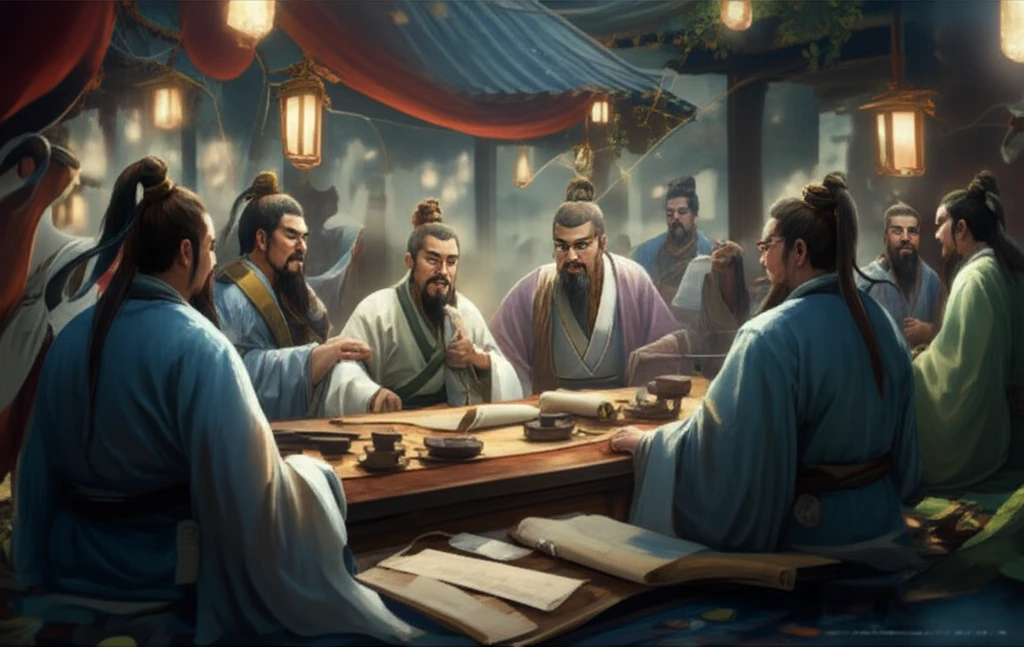
Unveiling Tang Dynasty Literary Circles: How Gossip, Networks, and Storytelling Shaped a Golden Age
"Explore the intricate web of social connections and narrative traditions that fueled Tang Dynasty literature. Uncover how gossip, friendships, and shared knowledge influenced the era's most celebrated works."
The Tang Dynasty (618–907 AD) is often considered a golden age of Chinese literature, a period of remarkable innovation and artistic achievement. While the brilliance of individual poets like Li Bai and Du Fu is undeniable, recent scholarship reveals a more nuanced picture of the Tang literary world – one shaped by intricate social networks, the pervasive influence of gossip, and the dynamic interplay of storytelling traditions.
Understanding these often-overlooked elements provides invaluable insights into how Tang literature was created, disseminated, and interpreted. It moves beyond the romanticized image of the solitary genius to reveal a collaborative and socially embedded literary culture.
This article explores recent contributions to Tang literary studies that shed light on these fascinating aspects, examining how networks of friendships, the circulation of gossip, and the evolution of narrative forms shaped the literary landscape of this pivotal era.
The Power of Connection: Friendship and Literary Identity

Anna M. Shields' "One Who Knows Me: Friendship and Literary Culture in Mid-Tang China" examines the crucial role of friendship in shaping literary careers and cultural discourse. By analyzing the writings of prominent figures like Han Yu and Bai Juyi, Shields demonstrates how these networks fostered collective identities and provided platforms for social and professional advancement.
- Forging alliances: Actively pursuing patronage and establishing connections with influential figures was vital for career advancement.
- Cultivating outsider personas: Writers like Han Yu strategically adopted unconventional voices to attract attention and carve out unique identities.
- Poetic exchanges: Sharing and critiquing each other's work in salons and informal gatherings fostered creativity and built camaraderie.
- Funerary inscriptions: These texts emphasized the bonds of friendship, highlighting the obligations and shared values within literary circles.
A Lasting Legacy: Understanding the Tang Literary Tapestry
The works of Allen, Luo, Feng, and Shields collectively underscore the vibrant and multifaceted nature of Tang Dynasty literary scholarship. They highlight the need for continued exploration, both in terms of expanding textual coverage and embracing innovative methodologies.
By combining rigorous philological analysis with insightful theoretical frameworks, these scholars offer a more comprehensive understanding of the Tang literary world. They remind us that literature is not created in a vacuum but is deeply intertwined with social, cultural, and historical forces.
As we continue to explore the rich literary landscape of the Tang Dynasty, it is essential to acknowledge our debt to previous scholarship and to approach the intersection of literature and history with both rigor and care. It is through this commitment to excellence and ethical scholarship that we can truly appreciate the enduring legacy of this golden age.
